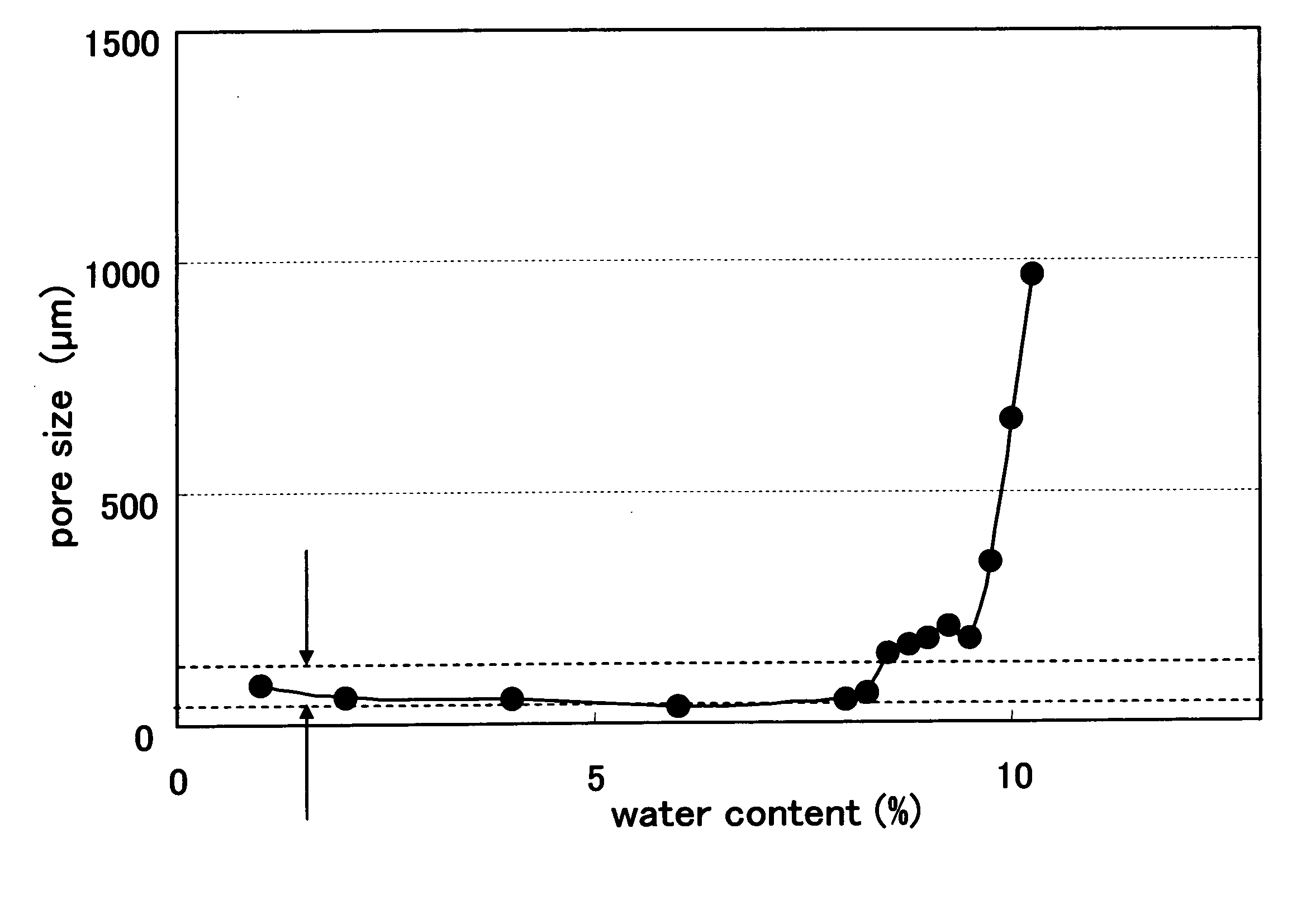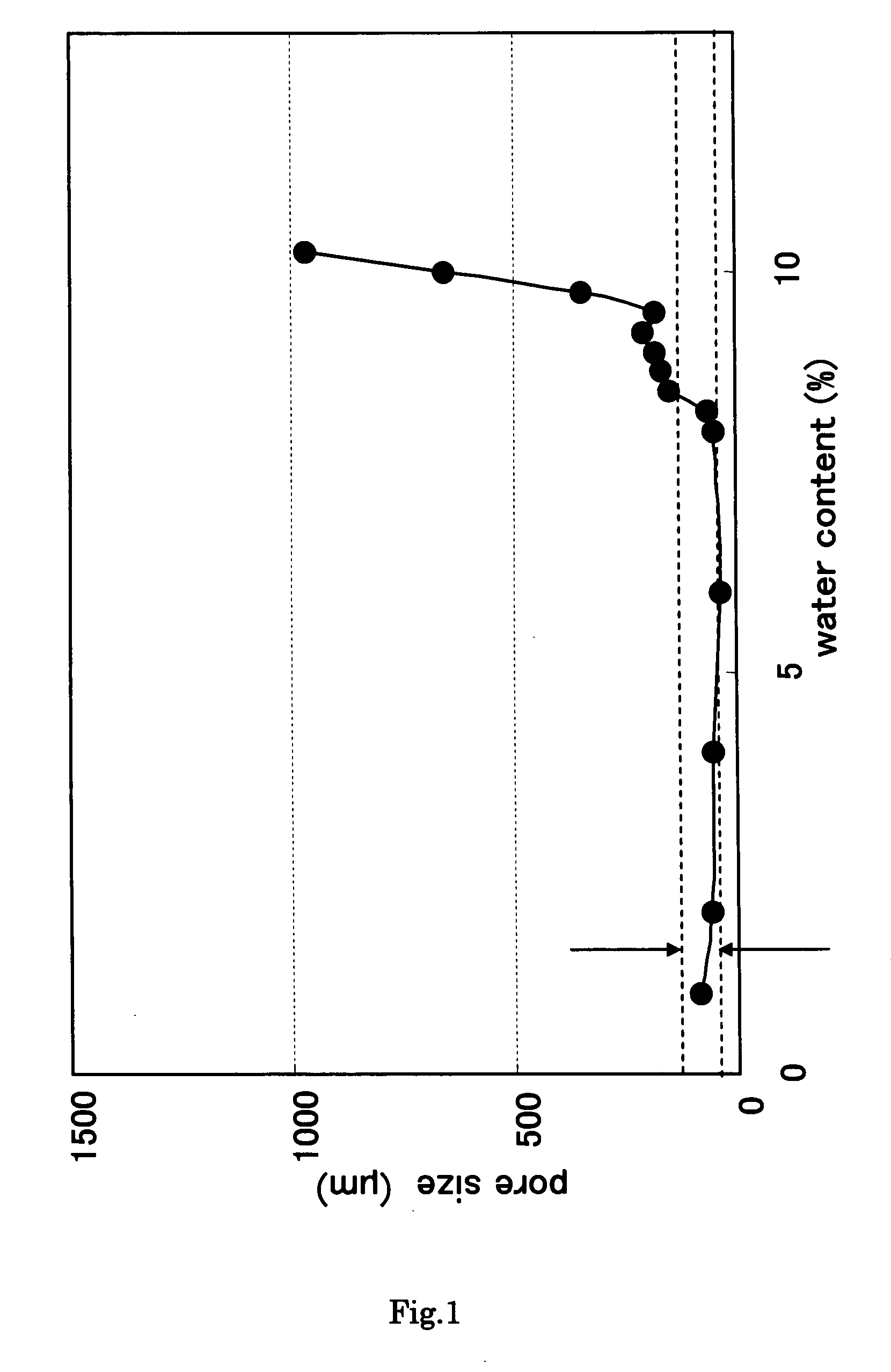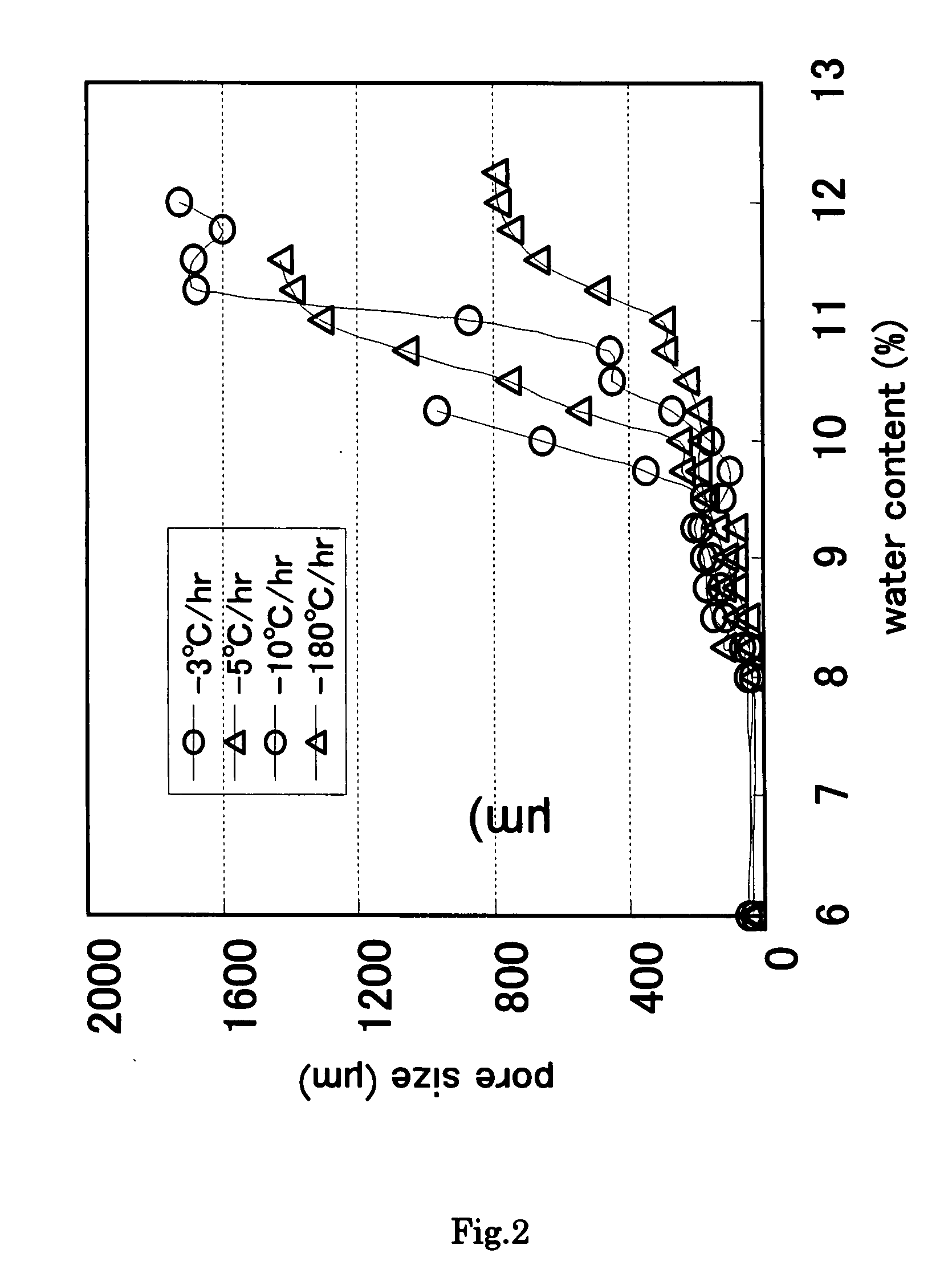Process for Producing Porous Object and Porous Object Obtained By the Same
a technology of porous objects and production processes, applied in the field of porous object production processes, can solve the problems of difficult to obtain porous objects with pore sizes of 100 m or larger, complicated production processes, and difficult to secure uniform pore distribution in the porous objects to be obtained, so as to achieve uniform pores, adjust pore sizes, and adjust pore sizes easily over a wide range.
- Summary
- Abstract
- Description
- Claims
- Application Information
AI Technical Summary
Benefits of technology
Problems solved by technology
Method used
Image
Examples
example 1
[0041] Porous objects were produced with mixed solutions whose water contents were different from each other, and thereby the control of pore sizes was checked.
[0042] A lactide-caprolactone copolymer (P(LA / CL=50 / 50)), 1.4-dioxane, and water were mixed together, with the composition ratio (mole ratio) between L-lactide and epsilon-caprolactone being 50:50 in the lactide-caprolactone copolymer. Thus 29 mixed solutions were prepared that had different water contents. In this case, the mixing ratio (weight ratio) between P(LA / CL=50 / 50) and 1,4-dioxane was constant (4:96), but the mixing ratio of water (water content) in each of the mixed solutions was changed to 1, 2, 4, 6, 8, 8.25, 8.5, 8,75, 9, 9.25, 9.5, 9.75, 10, 10.25, 10.5, 10.75, 11, 11.25, 11.5, 11.75, 12, 12.25, 12.5, 12.75, 13, 14, 16, 18, and 20 weight %. These mixed solutions each (20 g) were placed in a stainless steel petri dish (with a diameter of 5 cm and a depth of 1.5 cm; hereinafter the same applies).
[0043] The stai...
example 2
[0048] Porous objects were produced with cooling rates being varied. The control of pore sizes was checked.
[0049] A plurality of mixed solutions whose water contents were different from each other were prepared in the same manner as in Example 1 except for using P (LA / CL=51 / 49) in which the composition ratio between L-lactide and epsilon-caprolactone was 51:49. Then, the mixed solutions each (20 g) were placed in a stainless steel petri dish. The stainless steel petri dishes were placed on a cooling rack in the freeze-dryer (Trade Name: TF5-85ATANCS; manufactured by Takara). Then the temperature of the cooling rack was decreased to 10° C. (over 25 minutes) and they were allowed to stand for 60 minutes. Thereafter, the cooling rack was cooled to −50° C. at each of the predetermined rates (180° C. / hr, 10° C. / hr, 5° C. / hr, and 3° C. / hr) and then they were treated at −50° C. for 180 minutes. Upon completion of the cooling treatment, the temperature inside the freeze-dryer was adjusted ...
example 3
[0051] The influence of the variations in temperature used for freezing on pore sizes was checked.
[0052] Porous object samples were produced in the same manner as in Example 2 except that the cooling rate was 180° C. / hr and the final temperature used for cooling was set at predetermined temperatures (−20° C., −30° C., and −40° C.). The pore sizes of the porous object samples were measured (n=3). FIG. 3 shows the relationship between the water content in the mixed solutions and the pore size of the samples.
[0053] As shown in FIG. 3, when the cooling rate was 180° C. / hr, the variations in the final temperature used for cooling did not cause considerable changes in pore sizes obtained corresponding to the water contents. Accordingly, it was found that the cooling temperature did not affect the pore sizes. Thus, it can be said that when the cooling temperature is set at −20° C., excessive cooling is no longer necessary and thereby the cost can be reduced.
PUM
| Property | Measurement | Unit |
|---|---|---|
| temperature | aaaaa | aaaaa |
| temperature | aaaaa | aaaaa |
| temperature | aaaaa | aaaaa |
Abstract
Description
Claims
Application Information
 Login to View More
Login to View More - R&D
- Intellectual Property
- Life Sciences
- Materials
- Tech Scout
- Unparalleled Data Quality
- Higher Quality Content
- 60% Fewer Hallucinations
Browse by: Latest US Patents, China's latest patents, Technical Efficacy Thesaurus, Application Domain, Technology Topic, Popular Technical Reports.
© 2025 PatSnap. All rights reserved.Legal|Privacy policy|Modern Slavery Act Transparency Statement|Sitemap|About US| Contact US: help@patsnap.com



